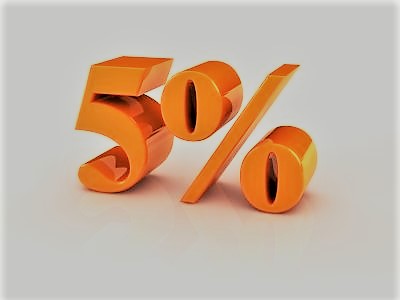Parts: Add the Extra Five Percent
By Sara Hey
When you think about your biggest parts customer who comes to mind? Is it a company that has been working with your dealership for years? Possibly a local school district or municipality, or perhaps even a specific customer name comes to mind. While those all may be large parts customers, they aren’t your biggest parts customer.
If you’re like most dealerships, your biggest parts customer, by a landslide, is your service department. For this month’s challenge, we’re going to tweak our parts-pricing strategy for our biggest customer.
A lot of labor
Did you know that it costs you more to sell a part to the service department than it does to a parts-counter customer? Think about all of the steps. Think about all of the people you pay to put parts on a unit: someone to unload the unit; someone to clean the unit; someone to figure out what parts the unit needs; someone to communicate with the parts department to see the pricing on the parts; a parts person to quote the parts; someone to communicate back to the service department; someone to call the customer with the quote; someone to tell the parts department there was approval; someone to order the part, pull the part and transport the part to the service department before you ever get to charging the customer for the part. Man, that’s a lot of labor.
Because of this, we need to add an extra five percent (at a minimum) to all of the parts that you sell to your service department. So, how do you do this?
Well, it depends. If you have a business management system (BMS), it may be as simple as clicking a button and adding an extra percentage. Some systems make it a little trickier; in that case, the easiest workaround is adding an extra five percent (again, at a minimum) to all of the parts that you sell, and then giving the counter customer a five-percent discount. This also works if you don’t have a BMS.
Pushing the percentage
Let’s look at what this could look like for your bottom line. Typically, we stop this at our “ouch” point, or your average parts sale – for most dealerships this is any part that is under $100.
For example, let’s say that in your service department you sold $50,000 worth of parts under $100. Your extra five percent would generate you $2,500 of net profit. While that’s nothing to scoff at, what’s pretty incredible is the power of pushing up the percentage just a little more: at 7.5 percent, net profit would be $3,750 on that $50,000 worth of parts; and at 10 percent, net profit would be $5,000.
I did a very informal survey on my Instagram account and asked dealers what they were charging for their extra percentage. What I found is that the majority were at 5 percent, but a number of them were also around seven percent. I even had one dealer who is charging 12 percent. The best part is: They are getting no push back whatsoever.
How in the world could that be? It’s because what customers are concerned about when they are dropping off their unit is not the price of the parts, but when they can get their unit back. The bonus? The extra work you are providing translates into net profit (meaning straight to your bank account cash). Here’s the thing: This challenge won’t take a lot of time to implement. In fact, for most dealers, it can be done in minutes, but it does take a mindset shift.
| The impact of 5% | The impact of 7.5% | The impact of 10% |
| $50,000 x .05 = $2,500 | $50,000 x .075 = $3,750 | $50,000 x .10 = $5,000 |
| $100,000 x .05 = $5,000 | $100,000 x .075 = $7,500 | $100,000 x .10 = $10,000 |
| $200,000 x .05 = $10,000 | $200,000 x .075 = $15,000 | $200,000 x .10 = $20,000 |
| $300,000 x .05 = $15,000 | $300,000 x .075 = $22,500 | $300,000 x .10 = $30,000 |
| $400,000 x .05 = $20,000 | $400,000 x .075 = $30,000 | $400,000 x .10 = $40,000 |
| $500,000 x .05 = $25,000 | $500,000 x .075 = $37,500 | $500,000 x .10 = $50,000 |
Step by step
Let’s recap what you need to do, step by step.
- First, decide what your “ouch” point is; for most parts departments, it’s around $100.
- Second, pick your percentage.
- Third, either click the magic button in your business management system, or raise the price of all parts under the “ouch” point by the percentage and then discount it at the counter.
Take the time now to add your extra percentage and share your percentage with us by tagging @sarahey1 and @opebusiness on Instagram. Don’t forget to use the hashtag (insert hashtag) to win some fun prizes!
Sara Hey is vice president of business development at Bob Clements International (bobclements.com); contact her at sara@bobclements.com or 800/480-0737.



